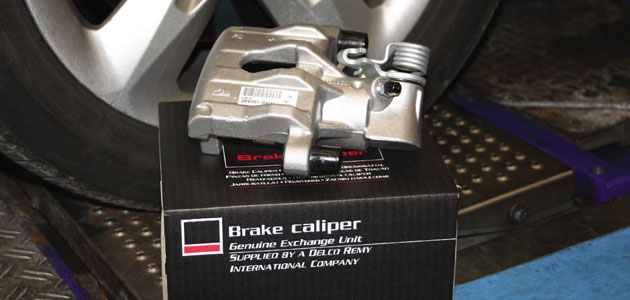
Author: Michael Flensborg, UK Sales & Marketing Director of Remy Automotive

There are four common braking faults: worn brake pads, worn brake discs, brake fluid levels and sensors. Only when all of these alternative braking conditions have been checked should the technician make the decision that the brake caliper is faulty and should be replaced. This prevents expensive labour and material costs as well as wasted ramp time due to the wrong diagnosis of the cause of the actual fault.
Four essential checks prior to changing the caliper
Are the brake pads worn?
Do a check for excessive wear and tear and then replace the pads if necessary.
Are the brake discs worn?
Check these for excessive wear, scouring or damage and, again, replace the discs if necessary.
Has there been loss of brake fluid?
First, check the fluid levels and, if the fluid level is low, investigate the reason for the loss of the fluid. Check for leaks at the reservoir and at the brake cylinder. If either is damaged, repair it or replace it if necessary. Also check the caliper itself for evidence of brake fluid leakage, torn seals, corroded pistons or broken bleed screws. If any of these are evident then replace the caliper.
Is the brake warning light still illuminated?
This is the time to check that the sensors are working correctly.
Installation Tips
There are some key visual installation tips for both conventional and Electric Park Brake (EPB) calipers that you should be aware of. I suggest that you always follow these important steps as failure to do so can be detrimental to the braking system and its performance.
Conventional calipers
Always follow the manufacturer’s instructions and use the VM’s recommended brake fluid. Make sure you completely flush the system and NEVER mix old fluid with new. To obtain the best results, always replace the calipers in pairs, as performance will decline over time. Take care not to over-tighten or cross-thread the bleed nipple on installation. If the screw is snapped while bleeding the system, the caliper must be replaced.
EPB calipers
There are two types of EPB calipers. With the external motor-type, simply follow the installation tips for conventional calipers.
However, with the failure of an EPB with an integral motor you should follow another set of rules. Always replace the complete unit – both motor and caliper. Take care, on removal, not to damage the motor casing by using exceptional force. Always use a suitable OBDII diagnostic tool when changing these calipers. Finally, take care when removing the plug connector, lifting the plastic fastener before attempting to remove the plug.









